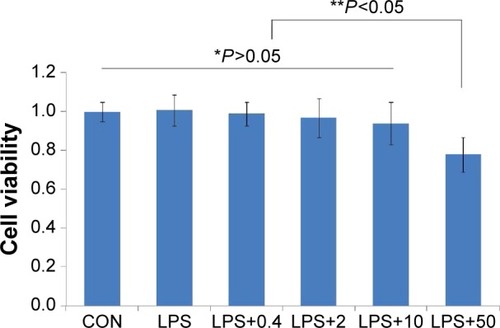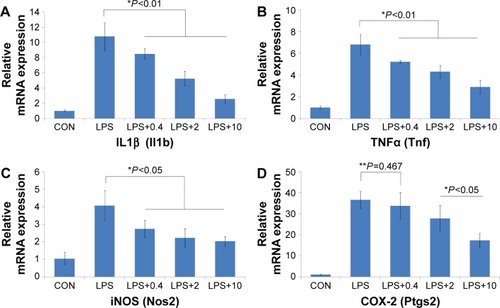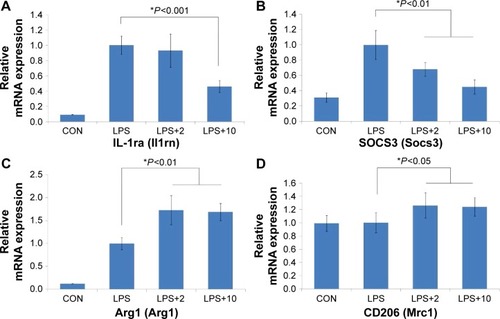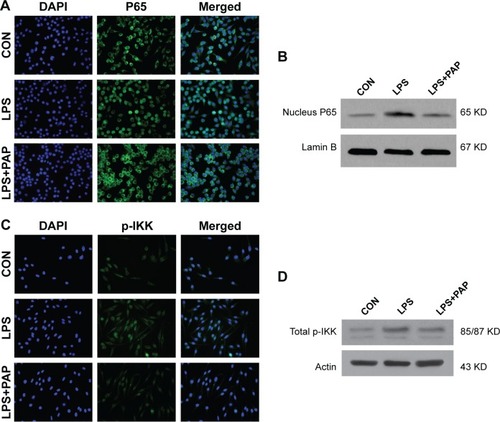Figures & data
Table 1 The primers for quantitative RT-PCR
Figure 1 The effects of PAP on the viability of BV2 cell.
Abbreviations: PAP, papaverine; LPS, lipopolysaccharide; CCK-8, Cell Counting Kit 8; SD, standard deviation; CON, control.

Figure 2 The transcription of proinflammatory genes after PAP pretreatment.
Abbreviations: PAP, papaverine; LPS, lipopolysaccharide; RT-PCR, reverse transcriptase polymerase chain reaction; SD, standard deviation; CON, control.

Figure 3 The production of IL1β and TNFα after PAP pretreatment.
Abbreviations: PAP, papaverine; LPS, lipopolysaccharide; ELISA, enzyme-linked immunosorbent assay; SD, standard deviation; CON, control.

Figure 4 PAP modulated microglial phenotype transformation.
Abbreviations: PAP, papaverine; LPS, lipopolysaccharide; RT-PCR, reverse transcriptase polymerase chain reaction; SD, standard deviation; CON, control.

Figure 5 PAP suppressed LPS-induced microglial activation by NF-κB signaling pathway.
Abbreviations: PAP, papaverine; LPS, lipopolysaccharide; CON, control; DAPI, diamidino-phenyl-indole.

